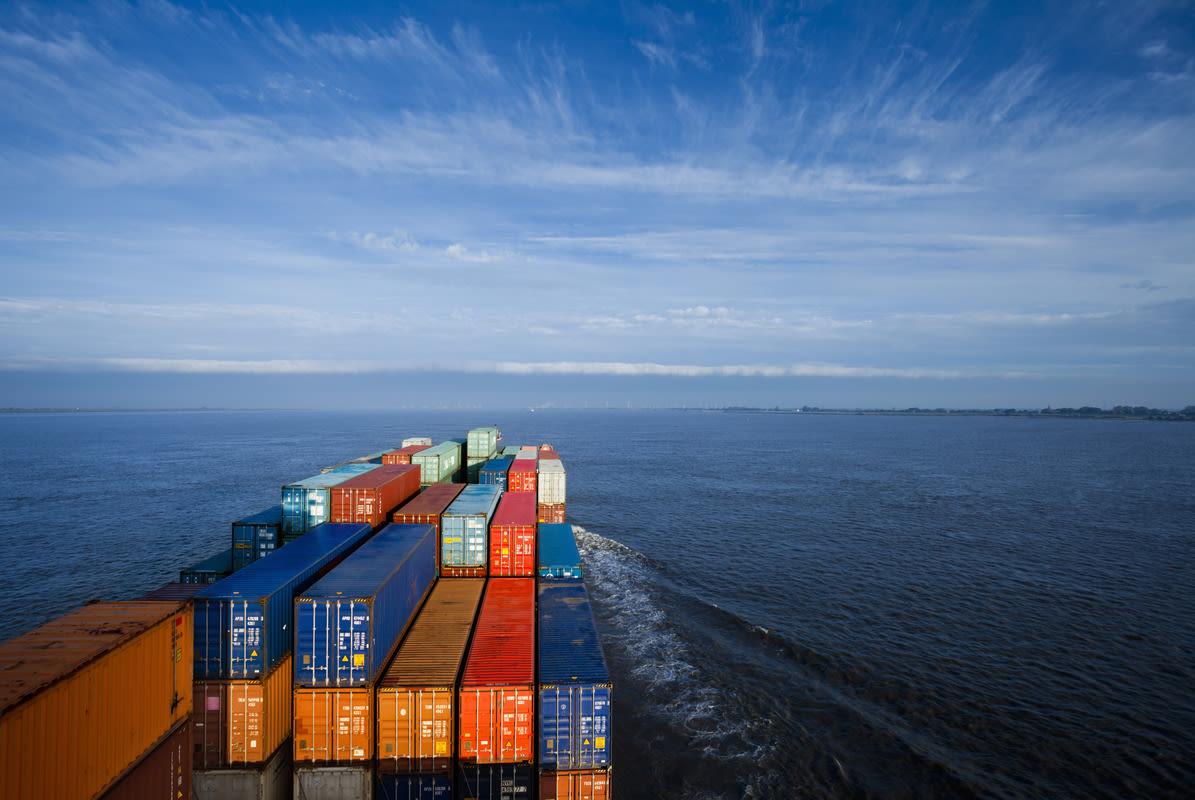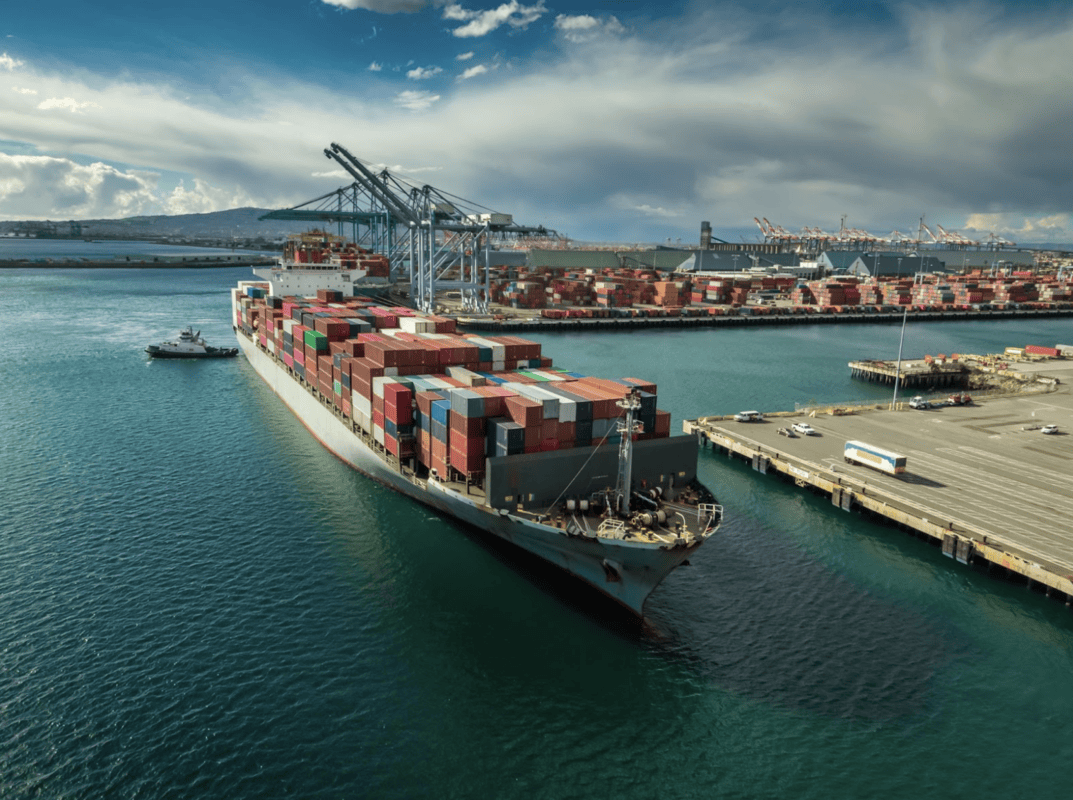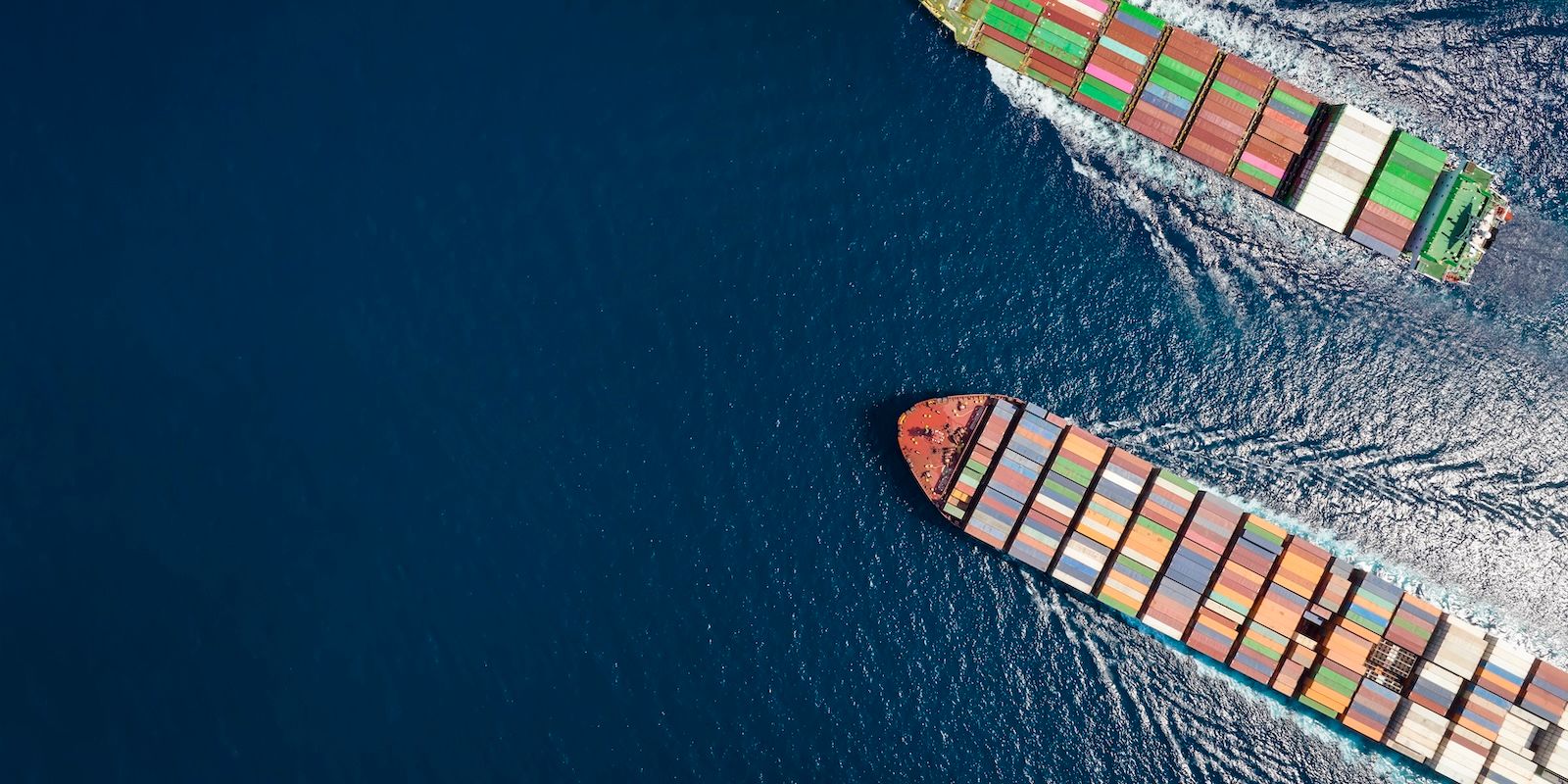
November 4, 2024
2025 Ocean Freight Outlook: Five Predictions You Need to Know
Tags:

November 4, 2024
Looking ahead to 2025, the global ocean freight market shows no signs of slowing down. From ongoing disruptions in the Red Sea and the Panama Canal, to broader geopolitical tensions and shifting global trade patterns, shippers face more complexities than ever: New potential U.S. tariffs on Chinese goods could drive up freight rates; businesses continue to diversify their suppliers, shifting from China and other Asian countries to Mexico; and the possibility of more port strikes may disrupt the U.S. East and Gulf Coasts in January. “We're going to see more conflicts going forward. This is not an anomaly,” warned Lars Jensen, CEO and Partner at Vespucci Maritime. Another key area to watch: how shippers, freight forwarders, and carriers respond to new ocean alliances rolling out in early 2025.
Flexport's Ocean Market Predictions for 2025 webinar highlighted essential themes and risks defining the uncertain ocean shipping market. Our panel of experts featured Trine Nielsen, VP, Flexport’s Global Head of Ocean Freight; Nerijus Poskus, Flexport’s VP of Global Ocean Procurement; Bjorn Vang Jensen, Founder and CEO of Nanooq Management Consultancies; and Lars Jensen, CEO and Partner at Vespucci Maritime. Below, you’ll find key insights, predictions, and scenarios they explored during the webinar.
Watch the recording of Flexport’s “Ocean Market Predictions for 2025” Webinar
Supply and Demand Dynamics Continue to Evolve in 2025
In 2025, supply and demand dynamics in ocean shipping are set to remain complex, with evolving trends and unpredictable fluctuations shaping the market. Looking at the big picture of supply and demand, Trine Nielsen offered a cautiously optimistic prediction: supply and demand remain relatively equal heading into 2025, despite longer lead times and supply pressures caused by Cape of Good Hope (COGH) diversions. Without much additional capacity, the market would likely see more volatility across rate levels and space availability in the event of any large, unexpected disruptions. However, the market is expecting an 8% increase in capacity in 2025 and only a 3% increase in demand, which will help ease volatility, according to Nielsen. “Effective space”—the usable capacity of a ship—generally trends higher than anticipated demand levels except at the peaks, so shippers should continue to expect rates to increase during peak times.

Volatile rate levels and space availability have been key topics in 2024, and are expected to continue on key routes like Asia to Europe and Asia to the U.S. Meanwhile, other trade lanes, such as those from Europe to the U.S. and Europe to Asia, have remained relatively stable—a trend that’s expected to continue.
But when it comes to navigating fixed-rate contracts, Nielsen pointed out that both carriers and freight forwarders have moved quickly to adapt to more uncertainty. For example, the traditional rate differential of $1,000 to $1,200 between Trans-Pacific imports to the East and West Coasts has become unreliable. Rates can fluctuate wildly, and currently, routing to the East Coast is nearly as affordable as routing to the West Coast, though this may change if an International Longshoremen’s Association (ILA) strike occurs on the East Coast around January 15th.
In 2024, blank sailings remained high (at 15-20%), making operational reliability a key issue for many shippers. This year, many of these blank sailings were related to vessels not being available in time to meet their schedule, further complicating the situation and adding to the volatility. Blank sailings in a “normal” environment are used as a tool to manage supply at times of low demand. But for most of 2024, blank sailings were driven by a lack of vessels, according to Lars Jensen. This has resulted in more extreme volatility, as carriers have experienced reduced capacity during peak season.
Ongoing Disruptions Add Uncertainty and Longer Transit Time
The Suez Canal diversions and an early peak season are setting the stage for a turbulent 2025 in ocean shipping, with ongoing disruptions and planning challenges shaping the year ahead. Many lingering issues in 2024 show few signs of letting up in the new year: for example, the Suez Canal, which normally handles 12% of global trade, is not expected to resume normal operations in 2025, according to Vang Jensen.
“What we have been used to seeing in 2024 will continue all throughout 2025,” he said.
Even though some niche regional carriers have used the canal, Vang Jensen continued, many carriers across the broader industry are still diverting vessels around the Cape of Good Hope. He added that shippers should understand how they are insured, particularly against General Average events, in case they’re shipping on a service transiting Suez: the premium—or lack of coverage—might not be worth the shorter sailing time.
With an additional two weeks of lead time required for shipments diverting around the Cape of Good Hope, many shippers and importers have started planning their shipments earlier. This shift has resulted in an earlier peak season than usual this year. According to Vang Jensen, this trend—planning shipments ahead of schedule—is expected to continue through the Lunar New Year in late January 2025.
Additionally, tensions between the ILA and the U.S. Maritime Alliance (USMX) remain unresolved. Both parties have agreed to work towards a resolution by the January 15 deadline, at which point a new master contract must be established to prevent another strike.
“I think it's pertinent to call out that the ILA situation is still there,” said Vang Jensen. “It hasn't gone anywhere. It's been kicked to the corner. Anybody who thinks that this is now a bullet you've dodged should really think again.”
New Shipping Alliances Bring Major Tactical Challenges
New shipping alliances set to launch in early 2025 are poised to bring tactical challenges for shippers, Lars Jensen said, with February and March likely marked by short-term chaos as the market adjusts to shifting capacities and service structures.
“This is the first time in decades we’ll see this level of diversity in different services,” said Lars Jensen, citing the Gemini Cooperation and MSC’s new network as two extremes.
Gemini will leverage a hub-and-spoke model, where large ships bring cargo to primary hubs and smaller ships carry goods from those hubs to different destinations. In contrast, MSC will focus on direct port pairs—meaning ships will make more frequent stops at ports, and deliver cargo directly to more locations without intermediate hubs. Premier and Ocean Alliance sit in between.

The Ocean Alliance—comprised of CMA CGM, COSCO/OOCL, and Evergreen—is expected to remain stable in 2025, and will extend its partnership through March 2032. The alliance structure and service network will remain largely unchanged, with members collectively operating over 40 unique services. Together, they will contribute just over 4 million TEUs of capacity to the alliance. An additional 4 million TEUs from these carriers will operate outside of the alliance, either as independent services or through vessel-sharing agreements (VSAs) with other carriers.
Gemini Cooperation
The Gemini Cooperation, a partnership between Hapag-Lloyd and Maersk, is set to launch in February 2025. This cooperation will bring together 3.7 million TEUs of shared capacity across 26 mainline services and 32 dedicated shuttles, focusing on critical east-west trade lanes, including routes linking Asia to Europe and the Americas. With a network spanning 85 unique ports, Gemini is designed to provide targeted, high-demand route coverage rather than a broad, fully integrated alliance.
A distinctive feature of Gemini is its flexibility: both Hapag-Lloyd and Maersk retain the ability to operate independently outside the Gemini network, allowing them to scale or adjust capacity on other routes as market conditions evolve. The cooperation also aims to enhance schedule reliability, with a target of over 90% on-time performance.
Watch our webinar on the Gemini Cooperation, featuring a conversation with Flexport CEO Ryan Petersen and Hapag-Lloyd CEO Rolf Habben Jansen
Premier Alliance
Following Hapag-Lloyd's departure, the Premier Alliance now consists of ONE, Yang Ming, and HMM, with a combined fleet capacity of approximately 3.5 million TEUs. An estimated 65% of this capacity will be dedicated to the alliance’s shared services, with the remaining capacity used for independent operations or vessel-sharing agreements with other carriers (e.g., MSC). They will offer over 25+ unique services (for example, Transatlantic)—some yet to be revealed.
Premier’s partnership with MSC adds flexibility, with MSC providing supplementary capacity on specific lanes rather than full integration. This cooperation enhances Premier's competitiveness on high-traffic routes and ensures it retains a strong presence on Asia-Europe trade lanes without extensive fleet expansion. By concentrating on select routes and cooperative slot exchanges, the Premier Alliance aims to optimize vessel utilization and maintain reliable service coverage in key markets.
MSC and Vessel-Sharing Agreements
MSC, the largest container carrier by capacity (5.7 million TEUs, around 20% of global container capacity), has opted not to join a traditional alliance after exiting the 2M Alliance with Maersk. Instead, MSC has pursued a strategy of selective vessel-sharing agreements and slot exchanges with other carriers, including Premier Alliance members and ZIM, to cover specific trade lanes without the full commitment of an alliance structure.
These VSAs allow MSC to benefit from shared capacity and route coverage on select lanes while retaining independence over its larger network. In particular, MSC’s slot exchange with Premier Alliance on the Asia-Europe trade enhances its reach in this region, adding frequency and port coverage in cooperation with Premier’s routes. MSC’s approach enables it to adjust capacity and enter partnerships as needed, providing both flexibility and competitive advantage across specific high-demand markets.
Vang Jensen also explained that Beneficial Cargo Owners (BCOs), companies that own the goods being shipped, will need to be more selective in 2025 due to an increasingly complex carrier landscape. Historically, BCOs may have focused mainly on transit time and price. However, with diverse network designs, they now need to evaluate other factors, such as risk (e.g., reliability of transit time based on route structure) and suitability to their unique needs.
Smaller shippers, who may not be familiar with these nuances, could find it challenging to choose the right service, and might benefit from closer collaboration with freight forwarders to navigate complexities and minimize risks.
“It's going to be much more complicated to figure out which of these services are necessarily the right ones for your business, because they’re [all] going to be vastly different,” said Vang Jensen.
Additionally, he stressed that shippers should abandon the misconception that a direct service is by definition faster than a transshipment service: “In some cases, it’s actually the transshipment service that can be considerably faster than the direct.”
Index-Linked Deals and Enforceable Contracts Become More Popular
Index-linked contracts, which link shipping costs to a well-known shipping index, have gained popularity for being able to provide consistent access to capacity and reduce administration costs.
“While an index-linked agreement is not necessarily predictable in terms of what the exact cost will be one month from now, it is predictable in that it will follow the market,” said Nielsen.
Vang Jensen echoed this view, and has advocated for index-linked contracts since 2012.
“While fixed deals were there, many were not honored anyway, so most companies have effectively been following an index already,” he said. “The NVOs are particularly serious about using them, because now, for the first time ever, they’re actually receiving tender requests from shippers asking for an index option. It’s not going to be a tsunami, but it's certainly a wave that's building.”
In addition to their predictable market-following feature—that is, their ability to link shipping costs with market price—index-linked contracts save time, as they over time simplify the request for proposal (RFP) process and reduce administration, and help build long-term relationships with carriers and forwarders. Vang Jensen recommended a duration of three years for these agreements.
Regulations and Tariffs Mean Shifts in Trade Patterns
As the world’s largest goods importer, the U.S. brought in about $3.8 trillion’s worth of goods in 2023, according to data from the U.S. Department of Commerce.
Poskus highlights a notable shift in sourcing for U.S. imports as markets in Southeast Asia, South Korea, and India begin to grow.
“Companies are reducing single sourcing, and they are diversifying now,” he said. “Why that’s important is, one, you should consider doing the same if you’re expanding, and two, you should keep in mind that changing sourcing may completely change how you import today.”
The location of your imports determines which port in the U.S. you’ll be using, he added.
Recommendations for 2025
“[We’ll see] a volatile environment going into 2025,” Nielsen concluded, sharing the following recommendations:
- Diversify your rate strategy: Don’t rely solely on fully fixed deals. Incorporate some floating index-based agreements, and consider the seasonality of your business in your planning.
- Diversify your carrier and alliance strategy: Consider leveraging new alliances and service networks over the next year to maximize operational quality and flexibility.
- Harness transit time and price-differentiated services: Having your goods arrive earlier than your competition can provide a significant advantage. With reliable and accurate transit time predictions, you can streamline your inventory planning process and react quickly to any disruptions.
- Consider less-than-container load options: If you split cargo, you can reduce costs by only moving urgent goods on premium rates. Consolidation is also often a cost saver.
- Stay agile: Regardless of what happens with any carrier or alliance, ensure you have a plan to navigate challenges and deliver your goods on time.
- Pay attention to shifting trade dynamics—sourcing, routing, and the need for multiple gateways.
“What we're seeing geopolitically is not a crisis,” Lars Jensen said. “What we see is a new normal. This is the consequence of a world that’s already multipolar.”
Reach out to your Flexport team to learn more about how you can get ready for the shifting landscape of the 2025 ocean freight market. Our team of experts is ready to help you prepare for the volatility and uncertainty ahead.
About the Author

November 4, 2024




